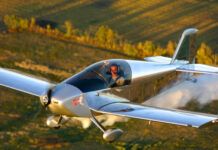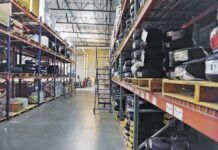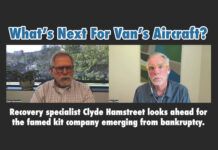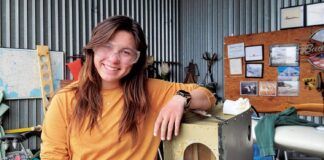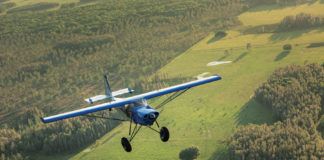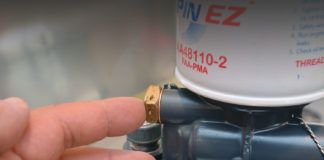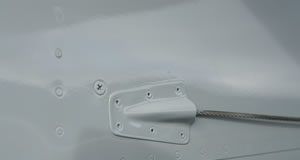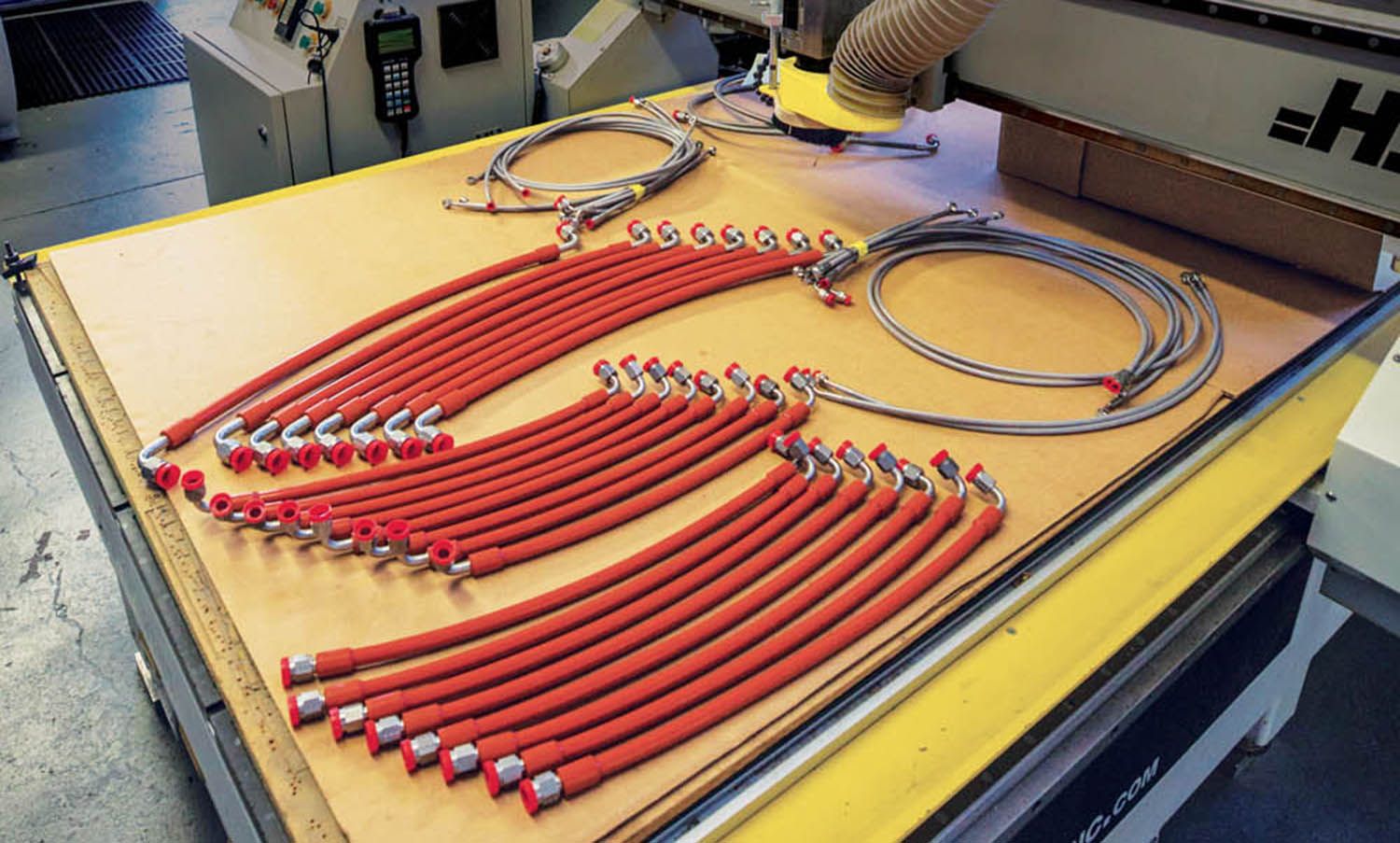 In the realm of aviation, hoses, tubing and their varied fittings and connections are not a sexy subject of conversation, unless you are talking to Steve Tschurwald or Tom Swearengen, the respective founders of individual companies, Aircraft Specialty and TS Flightlines, who consolidated their commercial efforts by uniting their names. Thus, Aircraft Specialty Flightlines was born.
In the realm of aviation, hoses, tubing and their varied fittings and connections are not a sexy subject of conversation, unless you are talking to Steve Tschurwald or Tom Swearengen, the respective founders of individual companies, Aircraft Specialty and TS Flightlines, who consolidated their commercial efforts by uniting their names. Thus, Aircraft Specialty Flightlines was born.
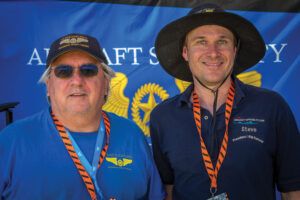
Dedicated to amateur builders, ASF’s passion for creative, problem-solving solutions equals a commitment to precision measured three steps to the right of the decimal point. Whether flexible or rigid, without these life-giving conduits of fuel, oil and hydraulic fluid, an aircraft is nothing more than an immobile artistic artifact.
After more than 30 years in the industrial and automotive hose industry, Swearengen started TS Flightlines and began taking orders in 2010. “I was one of his early customers,” said Tschurwald, who was building an RV-10. “At the time, homebuilders had two options for hose assemblies. You could either buy an expensive certified hose, or you could buy the components and build it yourself.”
There are a lot of variables in the DIY arena, and most builders cannot pressure test their creations, a critical requirement for anything that circulates an airplane’s life-sustaining fluids. “Impressed by the quality of his hose sets and level of customer service, when I started Aircraft Specialty in 2012, I wanted to include hose assemblies,” Tschurwald said.
“We identified this niche market where we could build hose assemblies equal to or better than certified quality at do-it-yourself prices and give amateur builders complete hose assemblies that have been pressure tested.”
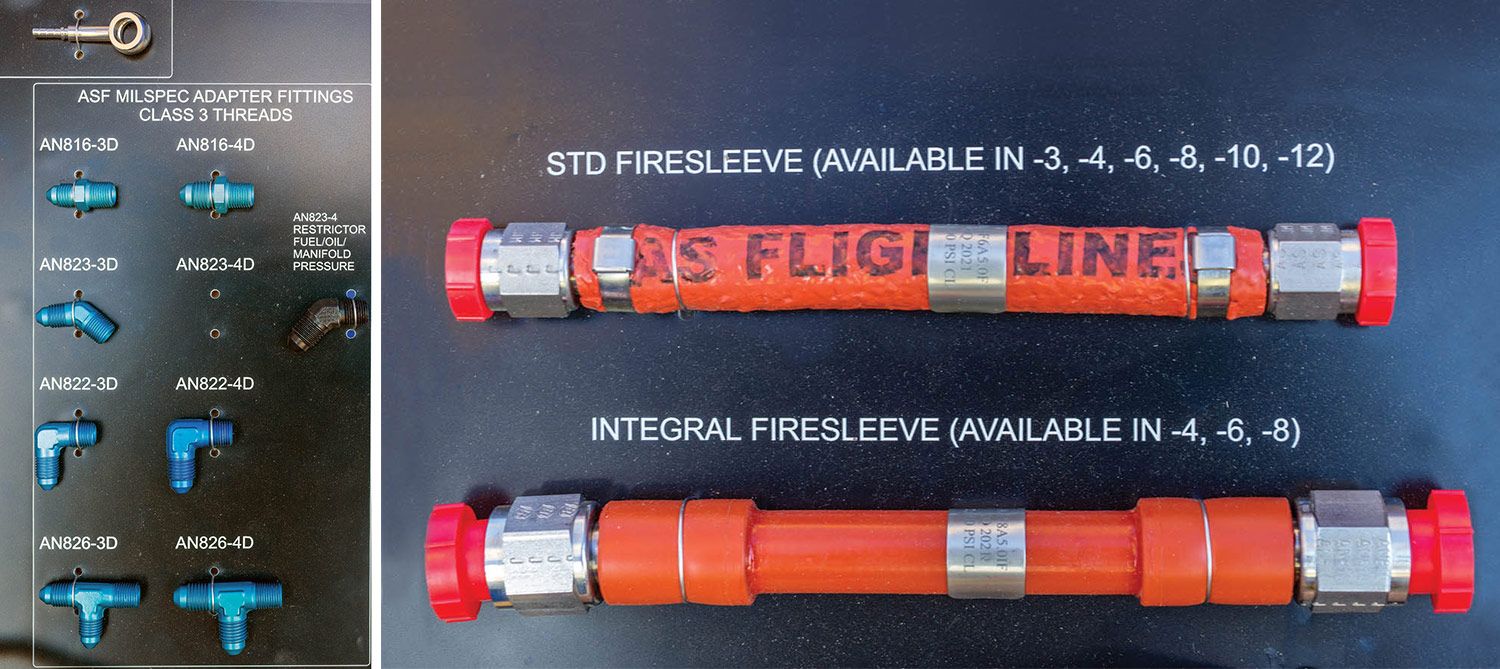
Fascinated by all things computer, Tschurwald had been tinkering with CAD for years, and CNC machining was the logical next step. As a builder, he clearly saw the benefit of being able to buy some of the more complicated parts builders had to fabricate, simple sounding parts like brackets and spacers.
“I didn’t know anything about CNC, but I wanted to learn, so I started Aircraft Specialty, I bought my first machine and posted an ad online.” An Australian building a backyard train was his first customer. “So, I plugged in my machine, locked myself in the garage to learn how to use it, and in three days I had usable parts.”
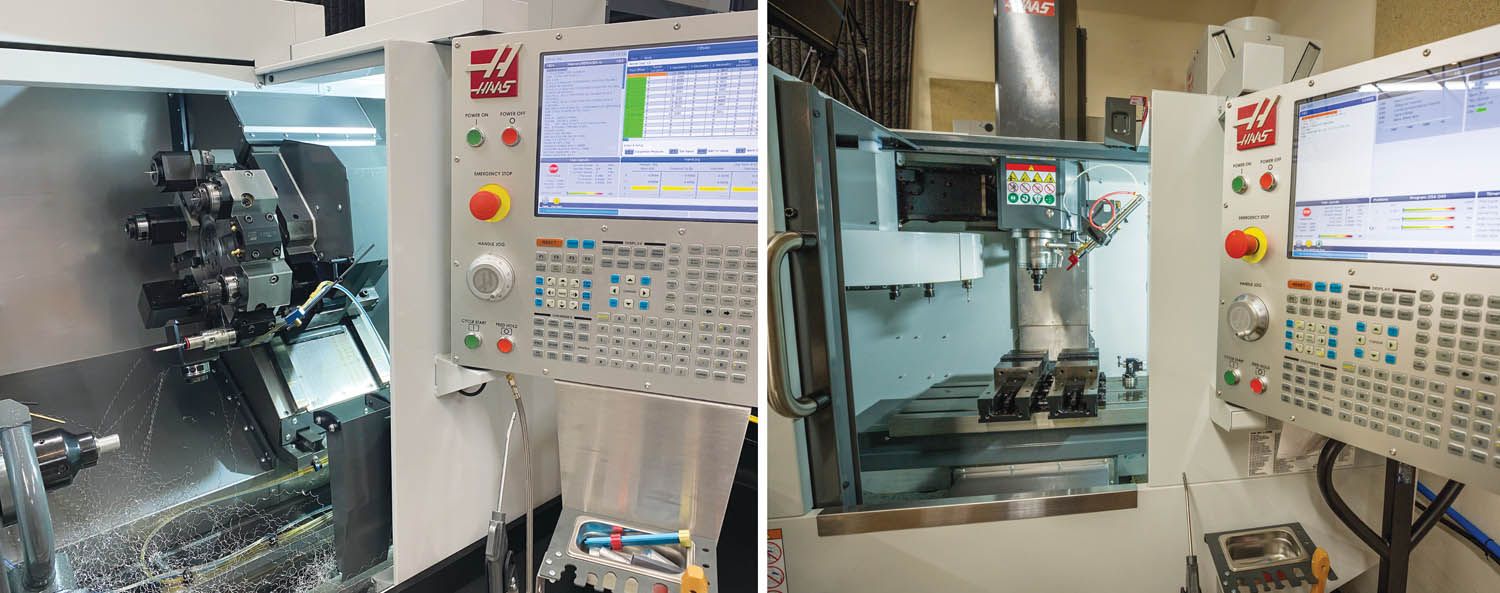
CNC Unites Three Divisions
In short order the AS shop was home to a CNC mill, lathe and router, which expanded the company’s product line and now unites ASF’s three divisions. Parts like wheel pant spacers and brackets for amateur-built airplanes came first. Instrument panels followed. “The panel is the showpiece for many airplanes, so we have a streamlined process that makes sure everything fits perfectly.” (ASF also builds panels for repair stations and avionics shops.)
Before cutting metal, ASF sends customers a 100% scale PDF proof they can have printed at most office supply shops. Many builders opt for a panel proof cut from Lexan and use it to build the wiring harnesses that unite the instruments and avionics. “Avoiding problems is easier when you can see what’s going on behind the panel.” When the customer OKs the proof, ASF sets the CNC router loose on metal, powder coats it and finishes the panel with laser-etched or screen-printed labels.
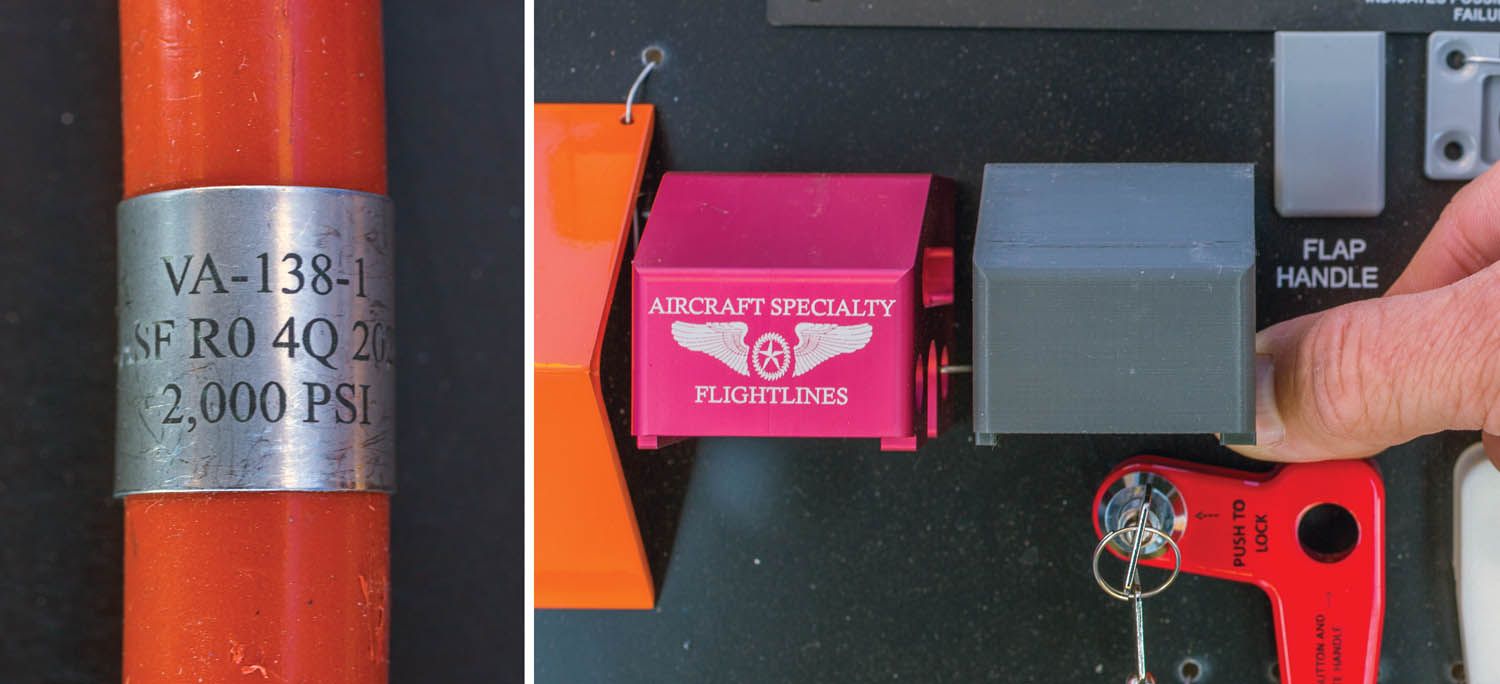
ASF’s third division is hose and fluid lines. “When we were smaller, we relied on several vendors for hose components,” Tschurwald said. The company had some vendor supply issues well before the pandemic, and “Tom and I realized that we needed to bring control of fitting design and production in-house. I’d like to say it was foresight, but the past couple of years have really been an opportunity to expand because we didn’t have any supply chain issues.”
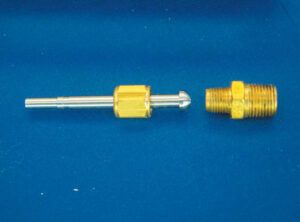
Looking at the display of ASF components at EAA AirVenture Oshkosh, it’s clear that hose ends are complex, even though the fittings only have two parts. “This is a ball seat primer line on a carb system or a flared fuel injection line for an IO-360 or IO-540,” said Swearengen. “We make an extended stem and can bend it to any angle the customer needs.”
An unusual block of anodized aluminum is an IO-360 flow transducer/divider bracket that fits between the cylinders. “Normally, the fuel flow divider has two hoses, one long, one short. Everyone gets the short one wrong,” he said. “This bracket positions the transducer in a way that eliminates the short hose; it has one that goes down between the cylinders to the fuel servo. We have 12 different combinations, and we know how long each hose needs to be.”

“Tom lives in South Carolina,” Tschurwald said, pointing to the flow divider bracket. “He does a lot of the proof-of-concept prototyping. He might send me a rough prototype, and I’ll do all the CAD and CNC work needed to manufacture it.”
Picking up another fitting, he explained that the stem matches the diameter of the hose and is held in place by a crimped collar. With proprietary dies, the CNC crimper sizes the collar perfectly. A Bluetooth digital micrometer calibrates the crimper, which automatically and continuously adjusts for springback.
Connected to the stem are the flare and nut that connect the hose to the aircraft component. “Because we make them in-house, we can put anything we want on that stem, so we are not limited to making just AN hoses,” he said.
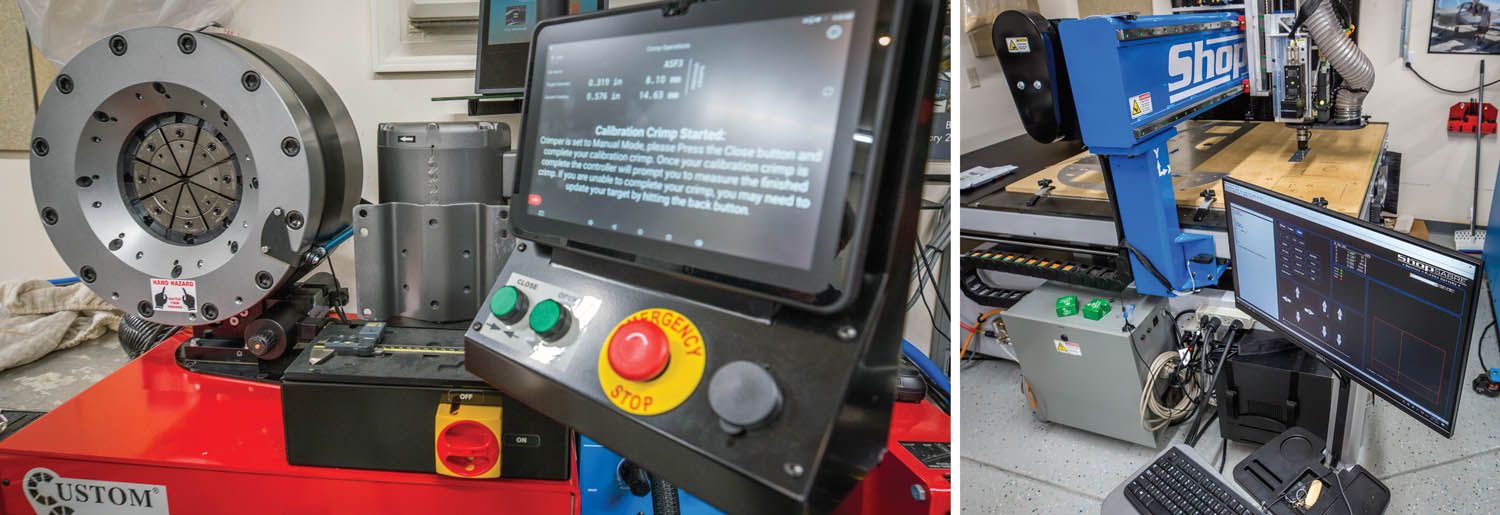
“Many aviation hose fittings are made of plated steel,” said Tschurwald. They are strong, but the plating often corrodes with time. From the start, “we’ve used stainless steel for our -2 to -8 hose fittings because of its strength and corrosion resistance. It will look as good in 15 years as it did the day you installed it. A -8 fitting is roughly a half-inch in diameter, and for larger fittings we use aluminum for weight reasons.”
When builders couldn’t find a stainless banjo fitting for the Rotax 912 that integrates directly into a Teflon hose end, ASF created one. Instead of AN fittings, the Rotax uses hollow bolts with a hole, where the fuel or oil goes through them and then sideways through the banjo fitting. Tschurwald duplicated the banjo in CAD, grafted it onto the stem that directly integrates it with a Teflon hose and then put the CNC machines to work.
“These capabilities allow us to do a lot of custom work whether it be metric or British pipe fittings for warbirds. There are a lot of neat areas we’re starting to go into now, grafting those hose ends to create fittings that otherwise wouldn’t exist,” he said.
“We consider everything custom. If builders haven’t deviated from their kit’s plans, we can build them a drop-in hose component set. For those who want to do something different, they tell us the make and model of the airplane and the specifics of its powerplant and fuel system, and what they want to do.”
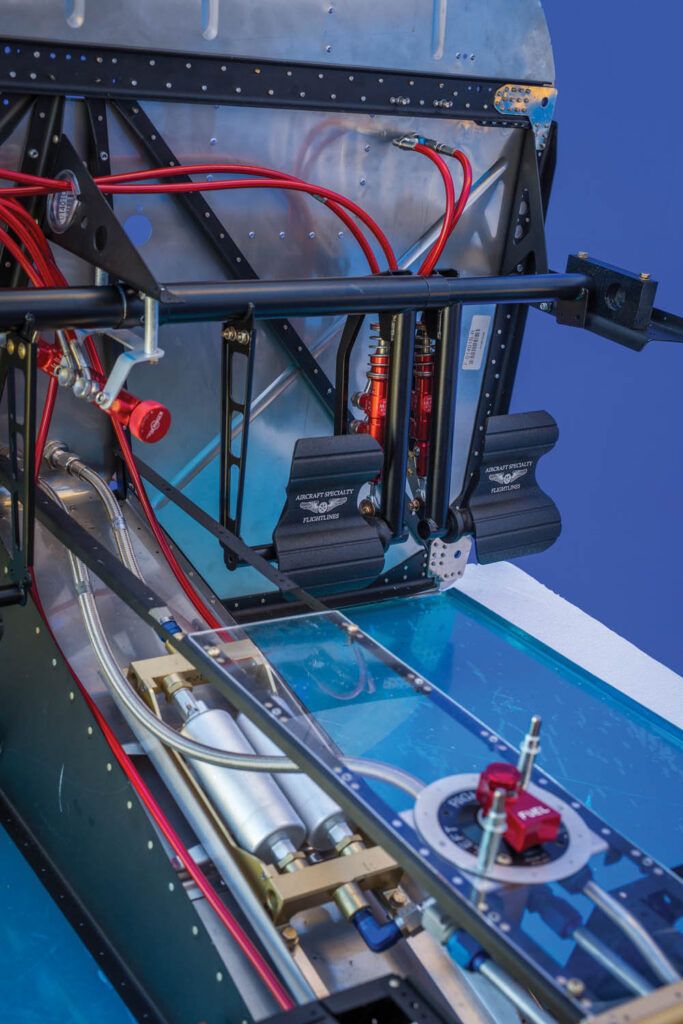
Making Parts for Manufacturers
Builders are not ASF’s only customers, Tschurwald said. Kit manufacturers such as Van’s Aircraft, RANS and Zenith account for approximately 40% of its business. Builders account for the remainder, pretty much evenly divided between those who stick to the kit’s plans and those who customize their kits.
Most kit aircraft today are designed in CAD and manufactured utilizing CNC, Tschurwald said. “Structurally, the same model aircraft being built by multiple builders are all the same, and that’s enabled us to design certain customized drop-in systems that simplify and enhance the experience for them.” A selection of the hose kit options is displayed on an RV-14 cabin mockup at ASF’s booth.
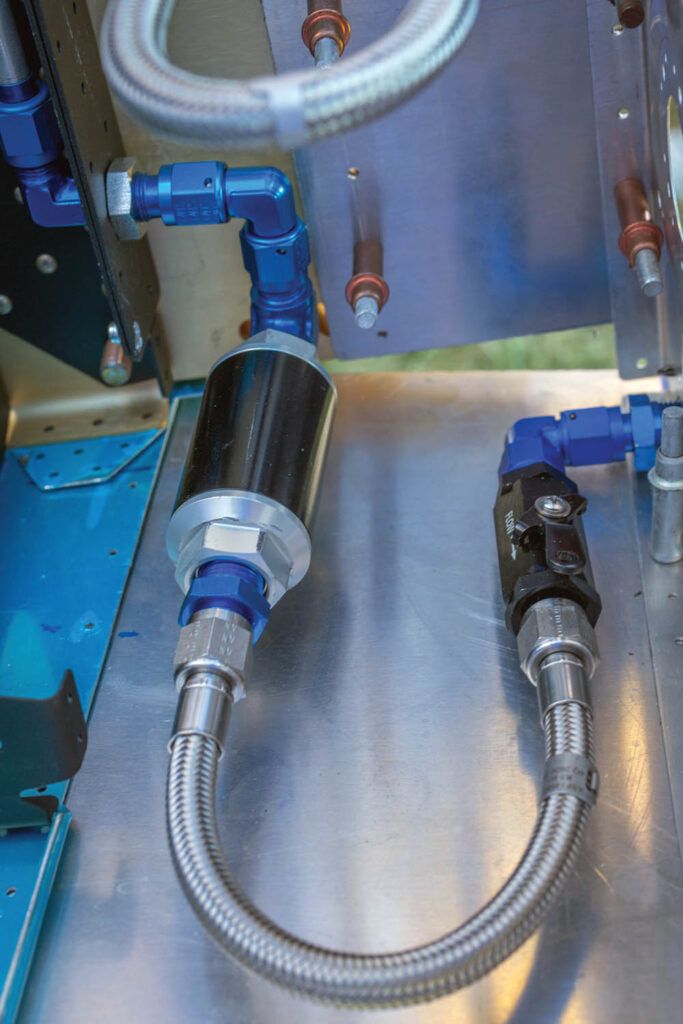
The SDS automotive fuel injection kit mounts dual electric fuel pumps in the tunnel between the seats. “We manufacture a new valve bracket, mounting plate, tunnel cover and necessary hoses and tubing.” Another kit moves the fuel filter from the cockpit tunnel to the wing roots, complete with shutoff valves for mess-free filter changes. Another option is plumbing systems for fuel tank selector valves, with different ergonomics.
Naturally, all the tubing is CNC bent and pre-flared. Another kit combines pre-bent rigid tubing with flexible lines that provide the necessary geometry without the frustrating gymnastics of snaking a 4-foot rigid tube into a tight space.
“We use rigid tube to provide the necessary geometry in tight spaces and connect flexible hoses to them. This is a full duplex system with a fuel feed and return. The fuel flows from the tank to the valve to the engine, and the duplex valve has a line that returns the excess fuel to the tank it came from so it won’t overflow. All builders have to do is put the pieces in the airplane and connect the fittings. They can plumb their entire airplane in an afternoon.”
ASF uses 5052 and 6061-T6 aluminum for most of its tubes because it comes in straight lengths and is very strong, Tschurwald said. To build tubes that are repeatably a perfect fit, he uses a laser coordinate measuring machine to tweak the CNC bending profile for stretching and springback data.
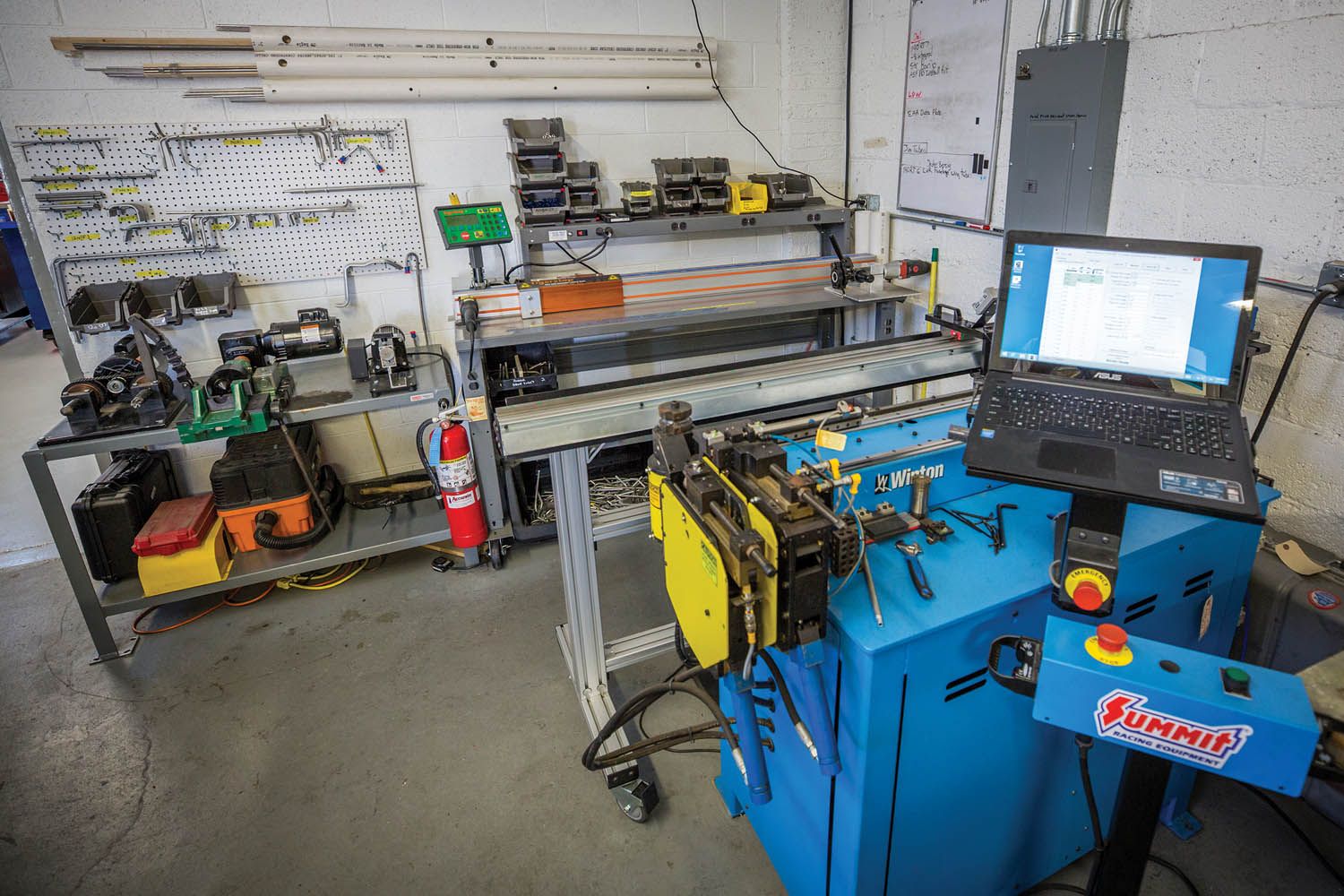
“Say it’s off by 1.2°. When you increase springback by 1.2°, that adds more stretch to the tube, so you have to shorten it a bit. The program does these computations, but we measure each iteration to make sure it’s perfect. It’s a trial-and-error process, but it doesn’t take a lot of trials because the computer, working in thousandths of an inch, takes multiple variables into consideration.
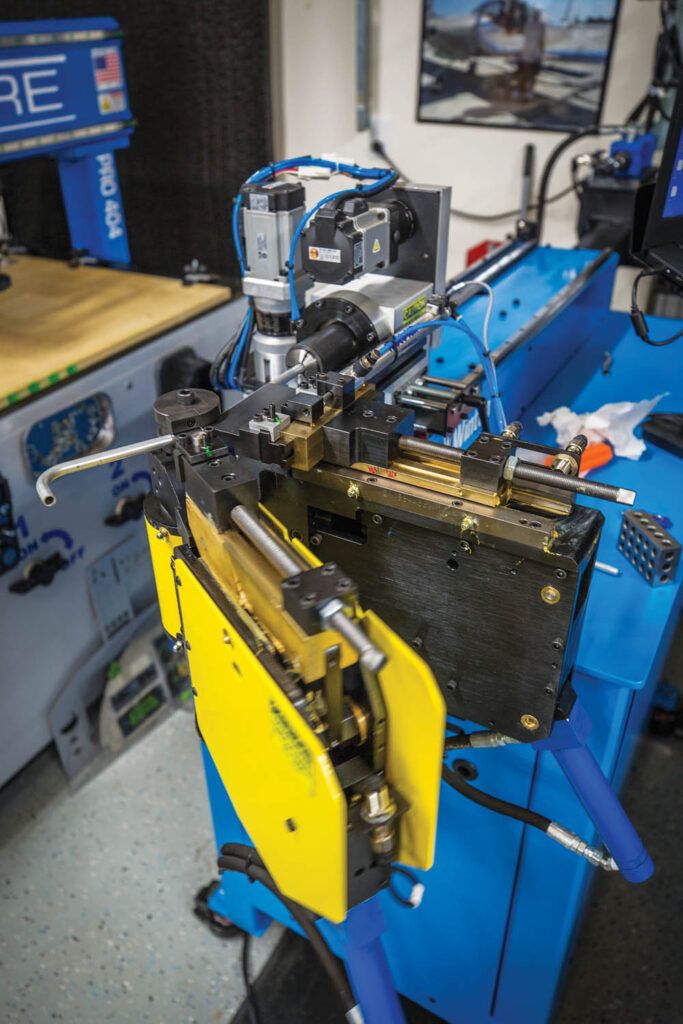
“We don’t pressure test rigid tubing because tightening the fitting multiple times can work harden the flare. But for fun, we put a 5052 tube on the hydrostatic test bench and ran a destructive test to see what fails first, the tube or the flare. With the flares done to MilSpec, we’ve taken those tubes to 4500 psi, and the failure is not the flare; the tube splits, which is what we like to see.”
Firesleeve
ASF uses firesleeve on all of its firewall-forward hoses, and it gives builders two different options. “Traditional sleeve slips over the hose, with stainless bands holding it in place. Many manufacturers apply the sleeve after building and pressure testing the hose, making for a baggy, wrinkled sleeve because it must be large enough to slide over the fittings,” Tschurwald said. ASF slides a tighter fitting sleeve on the hose, installs the fittings, bunches the sleeve in the middle, pressure tests the hose, spreads out the sleeve and bands it. “This gives us a tightly conforming firesleeve with no wrinkles. In addition, every hose gets a laser etched stainless tag with hose version and pressure test data.”
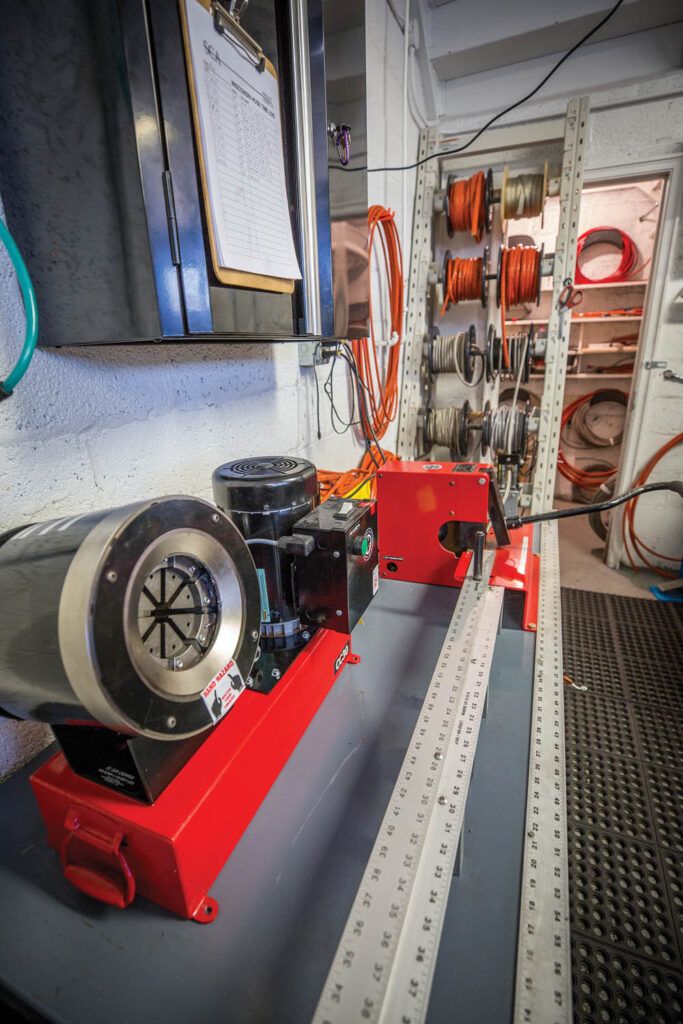
With silicone cuff seals at each end, the premium firesleeve is silicone that’s extruded onto the hose itself, said Tschurwald. It weighs about the same as the standard sleeve, but it costs roughly 15% more. “To get an integrated firesleeve in the past you had to buy an expensive FAA-certified product. Since we serve the Experimental market, we went to our hose manufacturer and asked for essentially the same hose. Because of our volume, we can make premium hoses at a small upcharge over a standard firesleeve hose.”
ASF’s assemblies are crafted from hoses with Teflon liners that are impervious to fluids, so they are not time- or life-limited. “They are also lighter, stronger and more flexible than rubber 303 hoses, which have thicker, heavier walls that are less flexible,” Tschurwald said.
The liner’s color identifies the conductivity of the hose. Conductive Teflon liners are impregnated with carbon that dissipates the static electricity created by fluids flowing through them directly to the airframe. Without the carbon, he said, “It dissipates static electricity to the hose’s stainless-steel braid; over time, this dissipation creates little pinpricks and turns the hose into something like a garden soaker hose. If you want a Teflon hose to stand the test of time, start with a conductive Teflon liner.”

Teflon hose did not exist when designers created fittings for older airplanes. ASF’s CAD capabilities solve that problem, Tschurwald said, picking up a length of finished hose for builders using older carbureted engines that are designed for some -2 sized hoses. “This is a -2 hose end we made specifically to integrate into a -3 diameter hose. By doing so, we can utilize the same diameter hose for -2, -3 or -4 size fittings. We can mix and match different size fittings on the same hose.
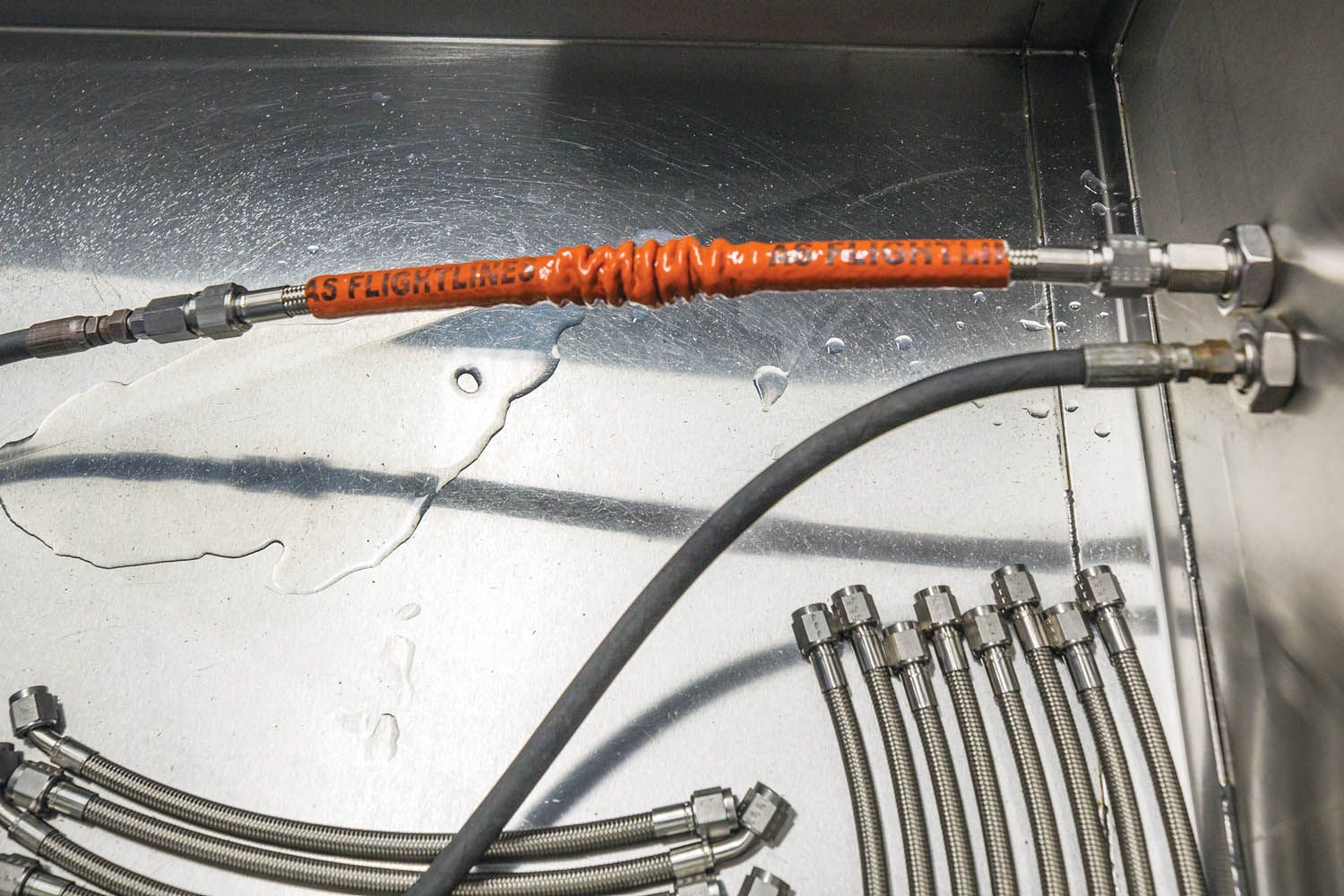
“Hydraulic brake lines can also be built in -3 or -4 size lines. Or we can build a hose with a -3 fitting on one end and a -4 on the other if the application calls for it. Some builders ask us about the stopping power of the smaller -3 lines,” he said with a smile. The answer? “We did the brake lines for Mike Patey’s Scrappy. They are all -3s. If you’ve seen what Mike does with this unique airplane, if -3 lines stop him, they will stop you.”
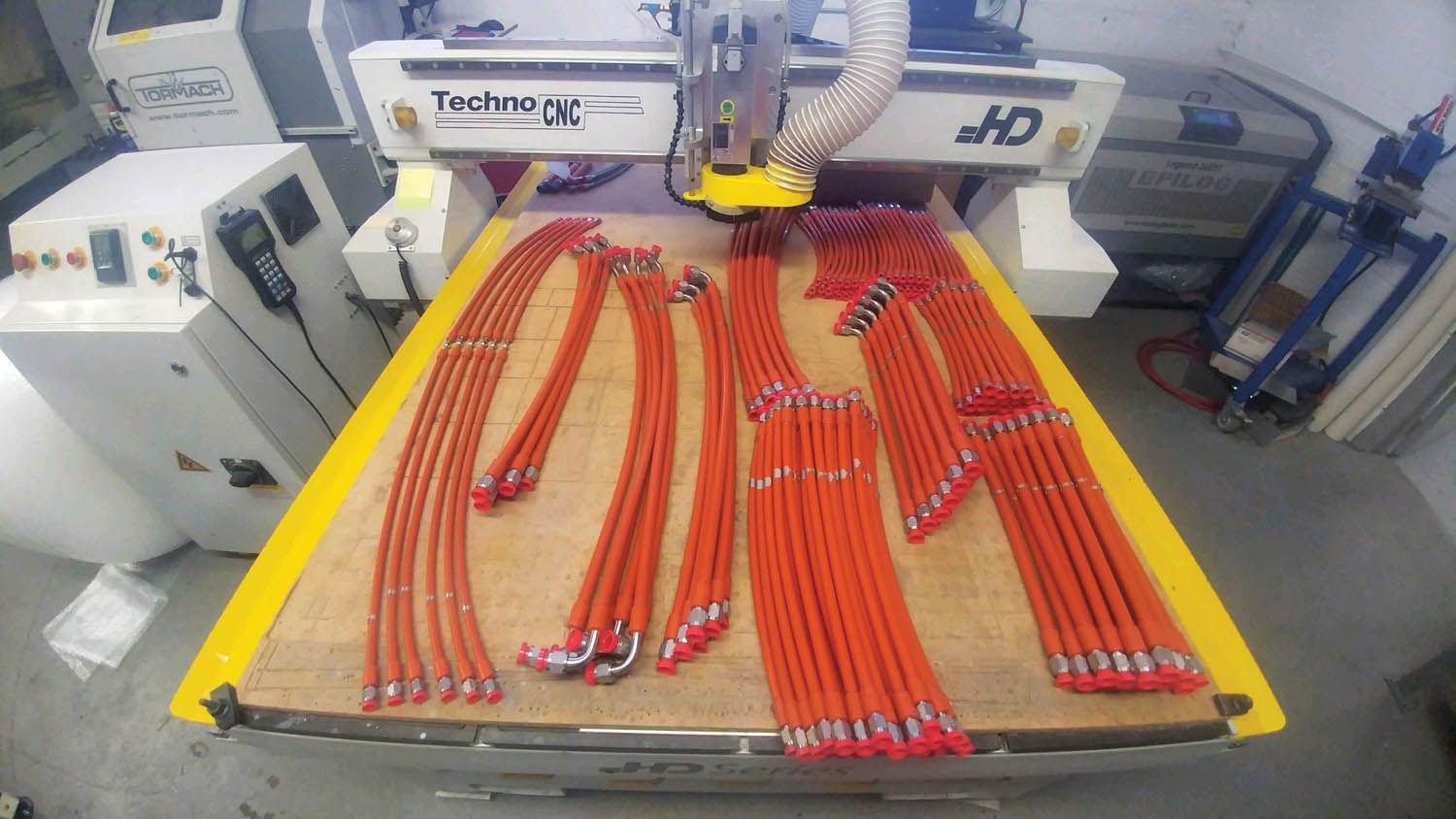
Beta Connection
“Everything we design and build is based on what builders want,” Tschurwald said. “We don’t have access to every make and model of Experimental/Amateur-Built airplane, so we work with a select global cohort of beta testers. We send them a 3D printed model for fit testing and tweaking and then a preproduction item to ensure there are no problems before we release the final version to other builders. In return for their aircraft-specific assistance, they receive a beta-test discount.”
ASF will also work with individual builders on one-off parts. ASF has 25 to 40 projects underway at a time, Tschurwald said. “We complete some of them in days, while others can take months or years. It depends on their complexity and how many revisions a builder wants to make. As builders ourselves, we enjoy the opportunity to be part of a lot of incredible projects.”
ASF is vertically integrated with in-house capabilities to design, prototype and manufacture just about any fitting or bracket for E/A-B aircraft. Tschurwald’s domain is the prototype shop, a separate facility 20-some miles from ASF’s production facility at Timmerman Field in Milwaukee, Wisconsin.
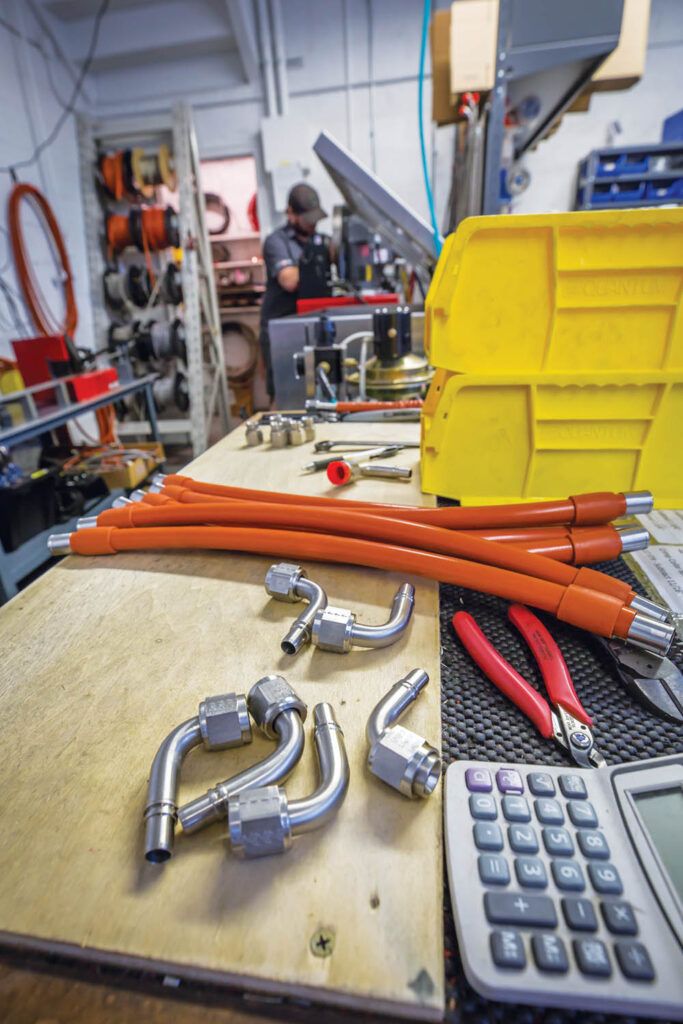
In addition to the expected CNC mill, Y-axis lathe with live tooling and a router, the prototype shop is equipped with a commercial F170 3D printer, coordinate measuring machine (accurate to within 0.003 inch), laser etcher, CNC crimper and a hydraulic CNC tubing bender that magically turns, rotates and bends a 4-foot length of metal tubing into whatever is programmed into the computer.
Supporting equipment includes things like a tool that squares tube ends before flaring. Tubes are cut 0.020-inch longer than needed to account for this step in the process. And when bending the tube, the program also adjusts for springback so the desired radius is perfect.
To prevent kinks on tighter radii, ASF has a CNC bender with a hydraulic mandrel that fits into the tube before the machine performs its magic. The production shop is not as thoroughly equipped as the prototype shop, Tschurwald said, because its primary function is production, to follow the CNC commands developed during the prototyping process.
The prototype shop maintains the CNC database of every iteration of every part the company has ever made, Tschurwald said. “Every product has a build sheet that starts with the part and revision number followed by the data needed to produce it. If a customer needs to replace that specific part, we can get its numbers from the database and duplicate it exactly. All the production shop needs is the file that tells the CNC tools what to do to re-create it.”
“What sets us apart is that Tom and I love Experimental aircraft and aviation in general,” said Tschurwald. “Having worked with builders all over the world, we have a good grasp of the systems that go into their airplanes and the changes they want to make. We have an extensive database of how different systems interface with each other. If a builder wants to make a change, chances are we’ve already done it and have the necessary data. If not, we will work with them to take measurements and incorporate it into their build.”
When builders call ASF with questions, they are talking to Tschurwald or Swearengen. “We recognize that there’s always room for refinement, and working with builders fine-tunes our data, which is integrated into our kits,” Tschurwald said. “Our goal is to utilize the collective experience of builders all over the world to help develop and perfect products that enhance the build experience.”



